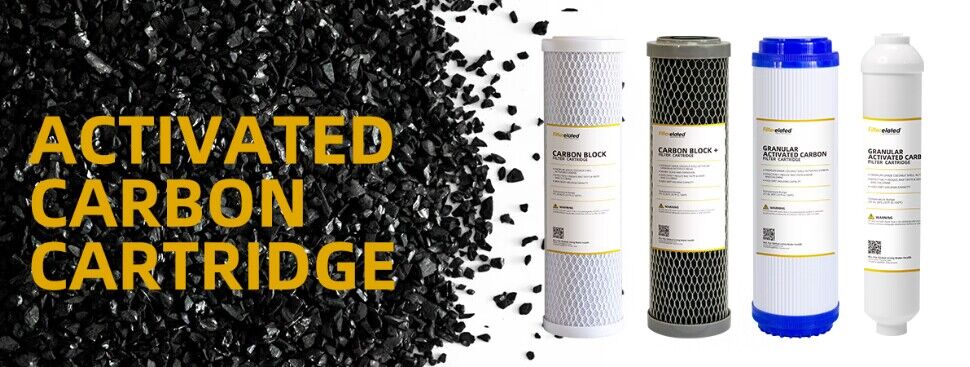Manufacturing Process. Sintered activated carbon cartridges are made by sintering powdered activated carbon into a spherical or columnar structure at high temperatures, whereas compressed activated carbon cartridges are made by mechanically compressing the powdered activated carbon particles into blocks at lower temperatures.
1. Physical Properties. Sintered activated carbon pore size distribution is relatively uniform, the specific surface area is larger, so it has better adsorption performance; compressed activated carbon pore size distribution is relatively dispersed, the specific surface area is smaller, the adsorption capacity is slightly inferior to the sintered activated carbon.
2.Application. Sintered activated carbon cartridge is suitable for water treatment, air purification, pharmaceutical industry and other fields, while compressed activated carbon cartridge is more widely used in water treatment, gas purification, solution decolourisation, desulphurisation and other fields.
3. Filtration precision. The filtration precision of sintered activated carbon cartridge is controllable and can be adjusted within the range of 0.1um to 30um, while compressed activated carbon cartridge does not have this characteristic.
4. Colour removal effect. Sintered activated carbon cartridge has good decolourisation effect and can effectively remove colours from coloured liquids such as cola and soy sauce, while compressed activated carbon cartridge is less effective in this regard.
5. Environmental performance. Sintered activated carbon cartridge is made of 100% carbon material, easy to regenerate and reuse, less pollution to the environment; compressed activated carbon cartridge degradation of organic material regeneration difficulties, higher prices, and greater pollution to the environment.
In summary, sintered activated carbon cartridge and compressed activated carbon cartridge have significant differences in manufacturing process, physical properties, application scope, filtration precision, decolourisation effect and environmental performance.

